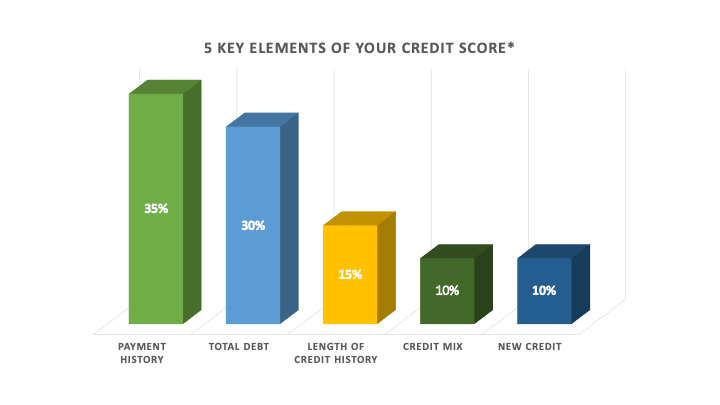Share

What are Mortgage-Backed Securities?
Many mortgage industry professionals and a vast majority of consumers are not familiar with Mortgage-Backed Securities (MBS), let alone the critical role they play in mortgage rate movements. Those with a basic understanding of that relationship will have a much clearer picture of the mortgage process.
What is MBS? Securitization?
MBS or “Mortgage-Backed Securities” are what groups of similar loans turn into in order to be sold, bought, and traded. This process of turning loans into securities is known as “securitization.”
Securitization, though not without its risks, is largely beneficial for all parties involved, and is currently essential to maintaining availability of mortgage credit (ability of consumers to get a loan if they want one). It also helps rates stay lower than they otherwise could be, on average.
The two basic building blocks of a mortgage-backed security are the CONSUMER who wants to borrow money (a mortgage, in this case), and an INVESTOR that wants to lend money in order to earn a return on investment. No matter what you’ve heard about MBS, Fannie, Freddie, FHA, and other government programs, MBS cannot and will not exist without consumers who want to borrow and investors that want to lend.The remaining facets of mortgage securitization grow from those two building blocks.
How do investors benefit?
Investors want to lend, but they also want to be protected from risk. If one investor with $200k only made one loan to one consumer, and that consumer defaulted, that investor would shoulder the burden of the entire loss.
Even if that investor has $1 million, and makes 5 loans for $200k, depending on the rate of default, the investor could easily experience a very different rate of return than another investor with the same amount of money investing in the same kinds of loans.
Naturally, if the investor was a gifted underwriter with a perfect eye for risk in assessing potential borrowers, he or she could greatly reduce the risk of default for his or her investments. Lenders attempt to do this anyway, but even if we factor out underwriting standards and the loan process, securitizing loans into MBS reduces risks for investors.
Reducing Risk.
Risk is reduced because securitization allows it to be “spread out” among similar loans. Consider the hypothetical scenario for an investor:
- – Average loan amount: $200k
- – Default Rate = 1 in 20 loans
- – Loss per default = $50
This investor has a 1 in 20 chance of losing $50k for every $200k they lend. If 20 investors each made one of these loans, 19 of them would be profitable and one of them would be out of business. They need a way to share this risk equally!
If Investor A and Investor B can afford to make 20 loans each, chances improve that actual defaults will match the anticipated default rates, but even if the default rate is accurate, Investor A could be holding both of the loans that default while Investor B holds none. These two investors STILL need a way to share risk equally!
Securitization accomplishes this goal of risk-sharing. It allows both of the investors in the example above more certainty as to the default rate. It’s a trade-off between the small chance of big losses and a near certainty of small, predictable losses. Investors will take the certainty every time because if they can reliably predict the risk, they can easily adjust the price to account for that risk.
In the example of 20 investors each making 1 loan of $200k, if they “pool” those 20 loans together, and if the advertised default rate holds true (1 in 20), then they’ll have only one $50k loss divided amongst them ($2500). In this way, the investor has traded the 5% chance of a $25% loss for 100% chance of 1.25% loss ($200k x 1.25% = $2500). Knowing that the 1.25% loss is coming makes it easy to adjust the price so that the lender is profitable and can stay in business.
Conclusion on Securitization
Securitization is helpful for several reasons. The greater the certainty with which lenders can predict losses, the smaller the margins can be that protect against losses. This translates directly into lower rates for consumers.
Securitization also means investors can buy a piece of a mortgage portfolio without financing every mortgage in it. This is akin to buying stock in a company rather than the company itself, and it allows for far greater participation in the mortgage market among investors. More participation makes for a more liquid market where buyers and sellers can be relatively more assured of finding other willing buyers and sellers near current prices. This also reduces margins in the secondary mortgage market, incrementally benefiting rate sheets.
Of course there are downsides to this model. One might argue that the level of detachment between investors and the loans in which they were investing in the run-up to the financial crisis was one of reasons for the crisis. Indeed, it would be hard to argue otherwise, but the benefits of securitization (much more liquidity in mortgage markets, more loans for more people, lower rates, and less risk for investors) will likely be seen as outweighing the costs (detachment masking the real risk of loss, borrowers having to fit the underwriting mold of housing agencies) for the foreseeable future.
STAY IN THE LOOP
Subscribe to our free newsletter.
Just because you're preapproved doesn't mean your loan is a done deal. Lenders don't like changes to the financial information you submitted on your loan...
The housing market is hot right now, and mortgage rates are rising. But there are still ways to get a lower mortgage rate.
Using home equity funds strategically can be a great way to increase your property value.
If you're thinking about buying a home, you'll should understand the basics of your credit score.



